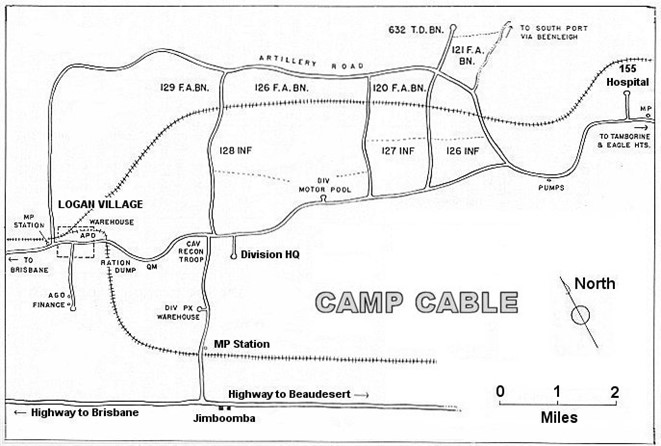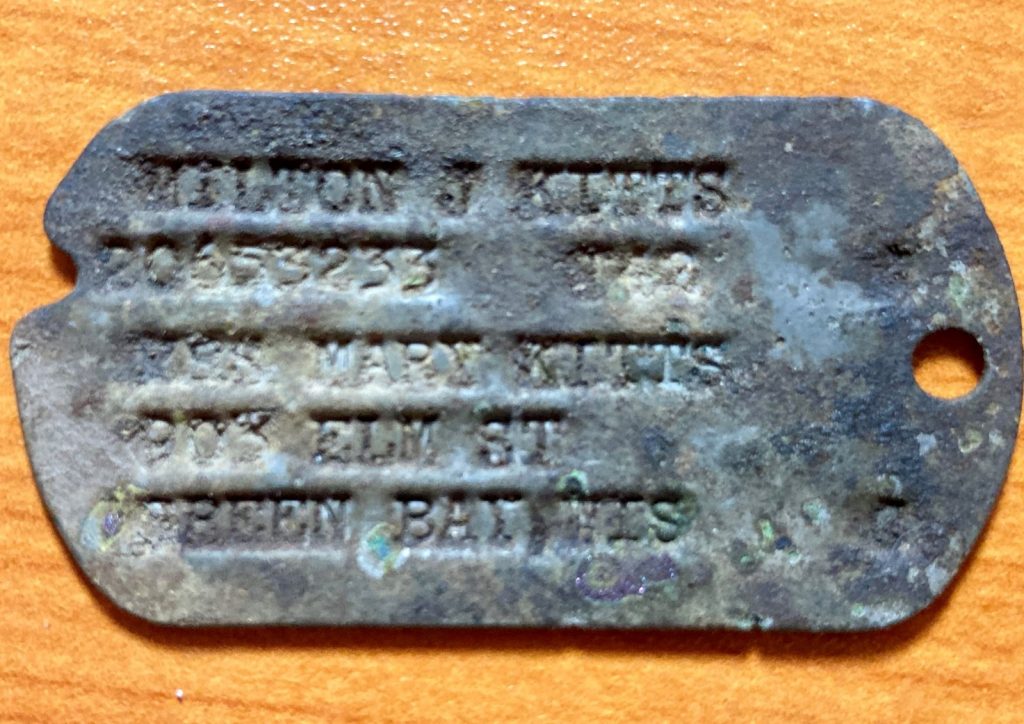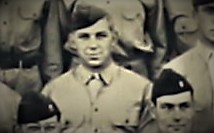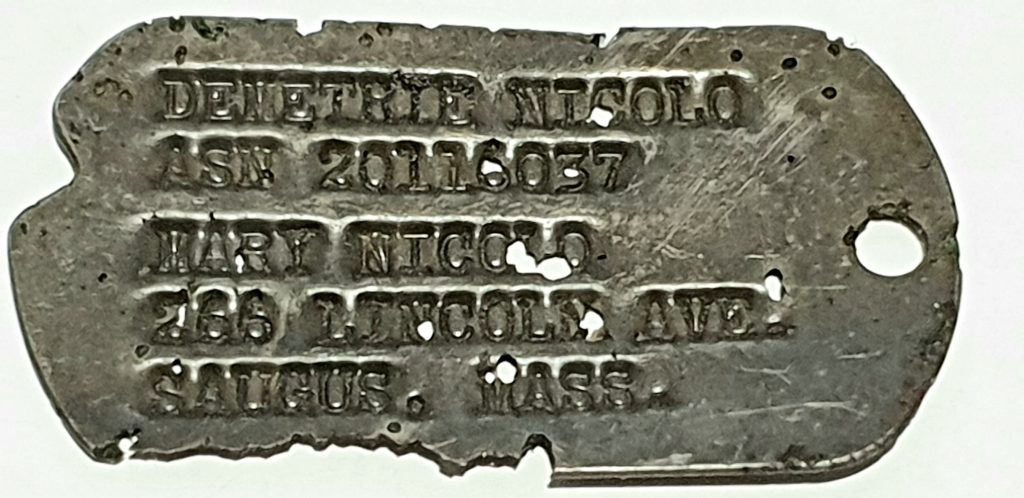Camp Cable was like Camp Columbia a similar large size military complex however, this one was situated in the bush, 50 kms south of Brisbane near Logan Village. The Camp and its units didn’t directly fall under the Southwest Pacific Area Command of General Douglas MacArthur, in charge of the war in the South Pacific. Camp Cable’s commander was General Robert L. Eichelberger. who did not report to MacArthur, but he did coordinate with MacArthur on matters that affected both the United States Army Forces in Australia (USAFIA) and the Southwest Pacific Area.
The base was first known as Camp Tamborine but renamed in honour of Sergeant Gerald O. Cable. Constructed in 1942 for the USAFIA, initially for the 32nd Infantry “Red Arrow” Division (United States) preparing for the New Guinea campaign, the base was occupied by various units during the war. Part of the base was an area south of the Albert River for the 155th Station Hospital. Camp related entertainment was both local and from overseas.
Sergeant Gerald O. Cable, who was killed in a Japanese torpedo attack on the USS Gregory in July 1942. Cable was a member of the 32nd Infantry Division, and he was the only members of the division to be killed during the attack.
Camp Cable was a large base, and it covered an area of approximately 1,000 acres. The base had a variety of facilities, including barracks, mess halls, training areas, and a hospital. The base also had a recreation area, which included a swimming pool, a theatre, and a bowling alley.

Camp Cable was home to a variety of units during the war. The 32nd Infantry Division was the first unit to be stationed at the base, and it included the 128th, 127th, and 126th Infantry Regiments, the 120th, 121st, 126th, and 129th Field Artillery Battalions, and the 632 Tank Destroyer Battalion. Solely Australian units operated in Camp Cable after the Americans had move their base to the Philippines.
The units at Camp Cable played a significant role in the New Guinea campaign. The campaign was fought from 1942 to 1944, and it was a series of battles between Japanese and Allied forces for control of the island of New Guinea. The Allies eventually won the campaign, and the units at Camp Cable played a significant role in the victory.
After the New Guinea campaign, the units at Camp Cable were transferred to other locations in Australia and the Pacific. Some of the units went on to fight in the Philippines and Okinawa.
Camp Cable was deactivated in 1945, and the land was returned to the Australian government. The site of the camp is now a residential area, and there are a few historical markers that commemorate the base.
Camp Cable Today
The site of Camp Cable is now a residential area with room for expansion and there are a few historical markers that commemorate the base. The most notable marker is a memorial to Sergeant Gerald O. Cable, which is located near the entrance to the Logan Village RSL. The memorial is a simple stone obelisk, and it bears the inscription “In Memory of Sergeant Gerald O. Cable, 32nd Infantry Division, Killed in Action July 21, 1942.”
There are also a few other historical markers at the site of Camp Cable. One marker commemorates the 155th Station Hospital, which was located at the base during the war. Another marker commemorates the 32nd Infantry Division, and it is located near the site of the division’s headquarters.
Dog tags found at Camp Cable
Metal detector enthusiast Vic Suchocki has found several dog tag at Camp Cable. Two of them have been miraculously linked to relatives in the USA and returned to their families:
- The dog tag of Milton J Kitts, Battery B, 121st Field Artillery was returned to his granddaughter in Green Bay, Wisconsin.
- The dog tag of Demetrie N. Nicolo, was returned to his grandson in Georgetown, Massachusetts (Contact with him was made through the CCHA website)
Milton J. Kitts
The following information and photo material was provided by Vic Suchocki.
The US 32nd Infantry Division was formed from Army National Guard units from Wisconsin and Michigan and was known as the Red Arrow Division as shown by its insignia. It arrived in southern Australia in May 1942 by convoy from San Francisco. The unit was moved by ship and railway in July 1942 over to Camp Cable. The 121st Field Artillery Battalion was a unit in the 32nd Infantry Division and Milton J Kitts was in that unit in Australia at the time. The units went to New Guinea and islands for various campaigns but returned to Camp Cable during 1943 and left Australia for good in 1944.



Demetrie N. Nicolo
We hope to be able to provide more information based research we are conducting on Demetrie N. Nicolo .

